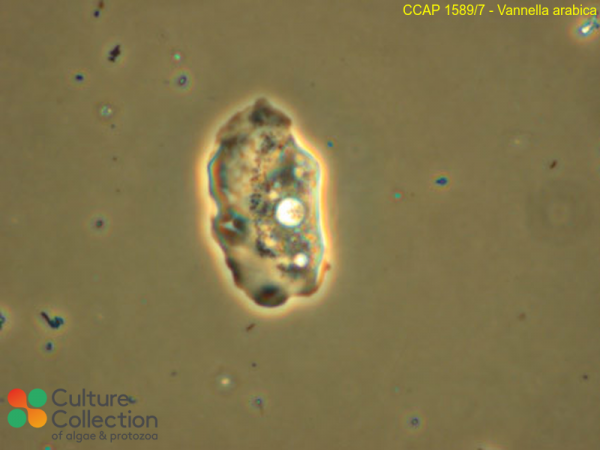References [ 4 ]
Nassonova E, Smirnov A, Fahrni J & Pawlowski J (2010) Barcoding amoebae: Comparison of SSU, ITS and COI genes as tools for molecular identification of naked lobose amoebae. Protist 161: 102-115.
Smirnov AV, Nassonova ES, Chao E & Cavalier-Smith T (2007) Phylogeny, evolution and taxonomy of vannellid amoebae. Protist 158: 295-324.
Smirnov AV (2001) Vannella ebro n. sp. (Lobosea, Gymnamoebia), isolated from cyanobacterial mats in Spain. European Journal of Protistology 37: 147-153.
DOI: none
Tekle YI (2014) DNA barcoding in Amoebozoa and challenges: The example of Cochliopodium. Protist 165: 473-484.
Sequences [ 2 ]
EMBL/Genbank Links
(Bold text = submission by CCAP staff or collaborators)
Division/Phylum: Amoebozoa Class: Discosea
Note: for strains where we have DNA barcodes we can be reasonably confident of identity, however for those not yet sequenced we rely on morphology
and the original identification, usually made by the depositor. Although CCAP makes every effort to ensure the correct taxonomic identity of strains, we cannot guarantee
that a strain is correctly identified at the species, genus or class levels. On this basis users are responsible for confirming the identity of the strain(s) they receive
from us on arrival before starting experiments.
For strain taxonomy we generally use AlgaeBase for algae and
Adl et al. (2019) for protists.
| Attributes |
| Authority | Page 1980 |
| Isolator | Page (1977) |
| Collection Site | seawater tank Kuwait Institute for Scientific Research, Kuwait |
| Notes |
Permanent type material placed in British Museum (Natural History); Replaced by cell line cleaned by Alexey Smirnov, June 2002; Images 1-5 by Alexey Smirnov, St. Petersburg University |
| Axenicity Status |
Bacteria present |
| Area |
Asia |
| Country |
Kuwait |
| Environment |
Marine |
| GMO |
No |
| Group |
Protozoa |
| In Scope of Nagoya Protocol |
No |
| ABS Note |
Collected pre Nagoya Protocol. No known Nagoya Protocol restrictions for this strain. |
| Collection Date |
c 1977 |
| Original Designation |
217 |
| Pathogen |
Not pathogenic: Hazard Class 1 |
| Strain Maintenance Sheet |
|
| Toxin Producer |
Not Toxic / No Data |
| Type Culture |
Yes |
| Taxonomy WoRMS ID |
|





